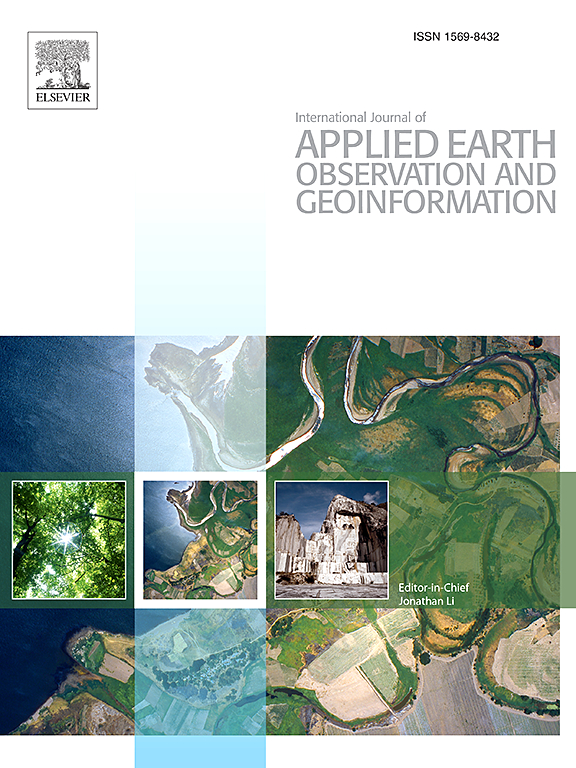A novel Otsu-UNet coupling approach to extract cage aquaculture in changing bay environments
IF 7.6
Q1 REMOTE SENSING
International journal of applied earth observation and geoinformation : ITC journal
Pub Date : 2025-07-15
DOI:10.1016/j.jag.2025.104738
引用次数: 0
Abstract
The accurate extraction and mapping of cage aquaculture are of substantial significance to the sustainable development of bay ecosystems but remain challenging due to diverse aquaculture practices in changing bay environments. Existing methods rely primarily on complex classifiers; however, their generalization capabilities are limited. To address this challenge, we developed a novel classification method called Otsu-UNet by integrating the Otsu algorithm with the U-shaped Network method. Based on the Google Earth Engine platform, cage aquaculture data were autonomously extracted from Sentinel-2 imagery using the Otsu technique, and high-quality samples were curated to train the UNet model for cage aquaculture extraction across bay locales. A comparative analysis was further performed with random forest and object-oriented methods. The model-driven extraction attained an F1 score of > 97 % across three distinct study areas—Pulandian, Shidao, and Dongshan Bays in Liaoning, Shandong, and Fujian Provinces—with accuracy metrics of > 95 %. Its accuracy was also superior to that of the random forest method and the object-oriented method. This methodology surpasses conventional approaches in its simplicity, efficiency, precision, and adaptability in deciphering cage aquaculture in the intricate tapestry of bay environments.
一种新的Otsu-UNet耦合方法提取变化海湾环境中的网箱养殖
网箱养殖的准确提取和制图对海湾生态系统的可持续发展具有重要意义,但由于海湾环境的变化,养殖方式的多样性仍然具有挑战性。现有的方法主要依赖于复杂分类器;然而,它们的泛化能力是有限的。为了解决这一挑战,我们通过将Otsu算法与u形网络方法相结合,开发了一种名为Otsu- unet的新型分类方法。基于谷歌Earth Engine平台,利用Otsu技术从Sentinel-2图像中自主提取网箱养殖数据,并对高质量样本进行整理,训练UNet模型,用于跨海湾地区的网箱养殖提取。采用随机森林方法和面向对象方法进行对比分析。模型驱动提取的F1得分为>;在三个不同的研究区域,即辽宁、山东和福建的普兰店湾、石岛湾和东山湾,其准确性指标为>;95%。其精度也优于随机森林方法和面向对象方法。这种方法在简单、高效、精确和适应性方面超越了传统方法,可以在错综复杂的海湾环境中破译网箱养殖。
本文章由计算机程序翻译,如有差异,请以英文原文为准。
求助全文
约1分钟内获得全文
求助全文
来源期刊

International journal of applied earth observation and geoinformation : ITC journal
Global and Planetary Change, Management, Monitoring, Policy and Law, Earth-Surface Processes, Computers in Earth Sciences
CiteScore
12.00
自引率
0.00%
发文量
0
审稿时长
77 days
期刊介绍:
The International Journal of Applied Earth Observation and Geoinformation publishes original papers that utilize earth observation data for natural resource and environmental inventory and management. These data primarily originate from remote sensing platforms, including satellites and aircraft, supplemented by surface and subsurface measurements. Addressing natural resources such as forests, agricultural land, soils, and water, as well as environmental concerns like biodiversity, land degradation, and hazards, the journal explores conceptual and data-driven approaches. It covers geoinformation themes like capturing, databasing, visualization, interpretation, data quality, and spatial uncertainty.
 求助内容:
求助内容: 应助结果提醒方式:
应助结果提醒方式:


